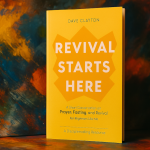 A tree with forty different fruits! And it’s a gorgeous tree, to boot. (Could be a hoax, but I can’t see that it is. But it definitely rivals the tree of the knowledge of good and evil in Eden.)
A tree with forty different fruits! And it’s a gorgeous tree, to boot. (Could be a hoax, but I can’t see that it is. But it definitely rivals the tree of the knowledge of good and evil in Eden.)
A wonderful new blog begins about kids in faith and parenting.
Are we nurturing kindness and compassion in our children? Recommendations:
Weissbourd and his cohorts have come up with recommendations about how to raise children to become caring, respectful and responsible adults. Why is this important? Because if we want our children to be moral people, we have to, well, raise them that way.
“Children are not born simply good or bad and we should never give up on them. They need adults who will help them become caring, respectful, and responsible for their communities at every stage of their childhood,” the researchers write.
The five strategies to raise moral, caring children, according to Making Caring Common…
The Junia Project, Phebe Willets, and Charity Johnson
The 52 Ancestors in 52 Weeks campaign encouraged bloggers to devote one post a week to writing about their ancestors. Charity Johnson, an amateur genealogist and the direct descendant of several long lines of Quaker women in America, accepted the challenge and made an interesting discovery in the process – she is not the first woman to preach in her family!
Seniors and friendship takes a creative turn:
NEW YORK (AP) — It’s not exactly “The Golden Girls,” but for Marcia Rosenfeld, it’ll do.
Rosenfeld is among thousands of aging Americans taking part in home-sharing programs around the country that allow seniors to stay in their homes and save money while getting some much-needed companionship.
“It’s a wonderful arrangement,” said the white-haired Rosenfeld, who when asked her age will only say she’s a senior citizen. “The way the rents are these days, I couldn’t stay here without it.”
She shares her two-bedroom, $1,000-a-month Brooklyn apartment with Carolyn Allen, a 69-year-old widow who has suffered two strokes and no longer wants to live alone.
Agencies that put such seniors together say the need appears to be growing as baby boomers age and struggle to deal with foreclosures, property taxes and rising rents. The typical situation involves an elderly woman, widowed or divorced, who has a house or an apartment with extra room and needs help with the upkeep.
“Our seniors want to remain part of the community they were raised in, where they worked and went to church,” said Jackie Grossman, director of the home-sharing program at Open Communities in the Chicago suburbs. “They don’t want to be just with other seniors. Maybe they love their garden, their tool shed, and they would have to give that up if they move into senior housing.”
A historical context for global warming — the Holocene Epoch.
The ten official Trappist ale breweries.
What is it that makes the monk-crafted beer from a specific group of ten breweries among the most respected in the world? Is it the quality of beer that they make or the rich, centuries-long history that informs their brewing processes? The answer is likely both — which is why we’ve taken a look at the ten official Trappist brewers and the monks who are behind these venerated beers.
The Trappists originated as a branch of the Cistercian Order, an austere Roman Catholic Monastic Order that was founded in 1098 in its namesake abbey, the Cîteaux Abbey, in the Burgundy region of France. When the Cistercians appeared to grow more lenient in their attitudes, the monks at La Grande Trappe Abbey in Normandy sought to return to their stricter ways in 1664. Their followers become known as Trappists, known for their self-sustenance, who later officially split from the Cistercians in 1892. They are now officially known as the Order of Cistercians of the Strict Observance.
Today, the International Trappist Association recognizes ten breweries across four countries, all of which produce beer that is made exclusively by Trappist monks. The beer sold is used only to support the monasteries and various charities.
Amongst beer enthusiasts, the Trappist label is especially sought after, with its enviable stamp of authenticity. Whether these Trappists monks do in fact make superior beer is a matter of taste, but you won’t know until you try them out.
Bog bodies at National Geographic:
Over 500 Iron Age bog bodies and skeletons dating to between 800 B.C. and A.D. 200 have been discovered in Denmark alone, with more unearthed in Germany, the Netherlands, the United Kingdom, and Ireland. (Read “Tales From the Bog” in National Geographic magazine.)
Much of the bodies’ skin, hair, clothes, and stomach contents have been remarkably well preserved, thanks to the acidic, oxygen-poor conditions of peat bogs, which are made up of accumulated layers of dead moss.
Tollund Man, for example, found in 1950 on Denmark’s Jutland Peninsula and perhaps the most famous bog body in the world, still “has this three-day beard—you feel he will open his eyes and talk to you. It’s something that not even Tutankhamun could make you feel,” said Karin Margarita Frei, a research scientist who studies bog bodies at the National Museum of Denmark.
In Denmark, about 30 of these naturally mummified corpses are housed in museums, where scientists have worked for decades to figure out who these people were and why they died.
Because some bear horrific wounds, such as slashed throats, and were buried instead of cremated like most others in their communities, scientists have suggested the bodies had been sacrificed as criminals, slaves, or simply commoners. The Roman historian Tacitus started this idea in the first century A.D. by suggesting they were deserters and criminals. (See National Geographic’s pictures of bog bodies.)
Link removed.
Apartment living in the District is getting smaller as local developers create micro-units in some of the city’s most desirable locations. These tiny dwellings have arrived on 14th Street NW and are planned for the Southwest Waterfront, Dupont Circle, Georgetown and even Crystal City to attract millennials with less expensive rents and trendy designs.
The “micro” studio and one-bedroom apartments, ranging from 250 to 400 square feet in size, are smaller than most conventional efficiency units of 450 to 550 square feet.
“The typical market for these units tends to be young hipsters under the age of 30 and mostly under 27,” says Charles Hewlett of Bethesda-based Robert Charles Lesser & Co., a real estate adviser studying micro-units nationally. “This is their first apartment, and they haven’t accumulated a lot of stuff yet.”















